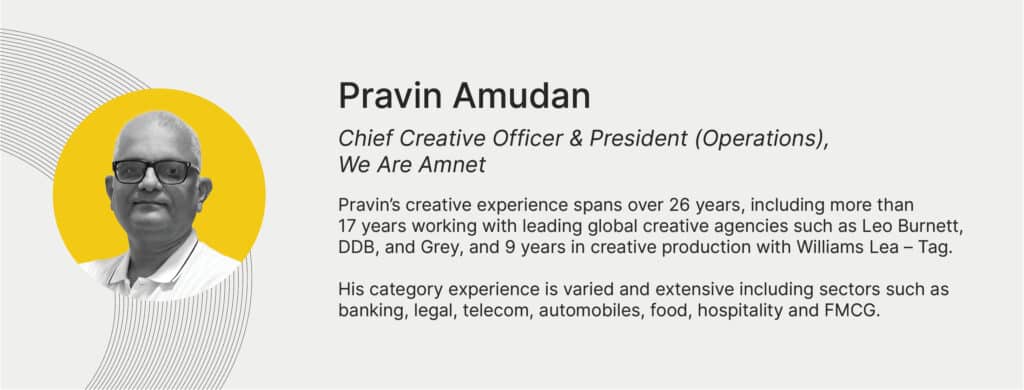Over the many wonderful years in the creative business, I have heard this short and somewhat abrupt two-word line almost in every animated discussion in the corridors and in every heated debate in the board rooms of agencies.
It’s subjective!

What starts off as a feedback session after a client meeting, ends inconclusively when the creative folks drop this line, as if to impatiently signal the end of the discussion.
Several exceptionally talented Art Directors whom I have worked with, have conveniently hidden themselves behind this word ‘subjective’ and have gleefully escaped further scrutiny.
Understanding the 80-20 Rule in Creativity
In fact, when I had just started my creative journey with a reputed agency years ago, I noticed one Senior Art Director who always used a bright yellow in all his layouts, irrespective of the client / brand he was working on. And it had nothing to do with the guidelines. One day, the curiosity got the better of me, and I asked him about it. And he proudly whispered to me (after making sure that Client Services was out of earshot) that yellow was his favorite color and that he loved using it. So much for creative rationale and subjectivity, I thought to myself!
Yes, creative work is subjective – but only around 20% of it, as I have observed and analyzed over time. 80% of it is still objective, if you care to break it down. Brand adherence, formatting, alignment, imagery, colors and typography, all of which have a direct impact on the overall quality of the creative output, constitute this 80%. Add deadline adherence to this mix and you start to see some data points and patterns.
Here, it is important to make a distinction between Fine Art and Commercial Art.
Fine Art is created primarily for self-expression. Its commercial success is irrelevant. Commercial Art is created with the intent of promoting or selling products or services. It is functional and must align with the goals of a business or a client. Which makes it all the more critical to keep it as objective as possible.
Introducing Objectivity: The Certainty Index
One of the ways of introducing objectivity and transparency in the creative process, is a tool that we use internally, called the Certainty Index. Simply put, it measures client satisfaction across accounts with tangible numbers, rather than having Client Services (and everyone in the team) oscillate between ‘The client loved it’ or ‘They hated it’.
Based on the data extracted from our internal workflow tool, the Certainty Index is assessed on four key parameters:
One: Quality – Are we getting it right, first time?
Two: Communication and responsiveness – How proactive are we in our interactions?
Three: Resolution of issues / escalations – How helpful are we in making life easier for our clients?
Four: Compliance to agreed project schedules – Are we adhering to committed deadlines?
Each parameter is assigned a weightage (which, incidentally, is based on the results of a survey that we conducted with our clients, where they called out what was most important for them).
The final weighted score is then published as a report and shared with clients monthly and discussed during the quarterly reviews. The report is also circulated internally to provide visibility to all stakeholders concerned and is also used extensively to train new resources.
So, the next time you hear someone in your creative team say ‘It’s subjective’, you know!





